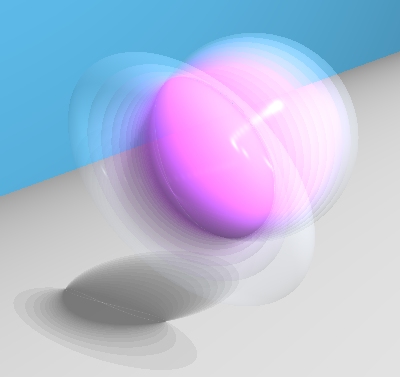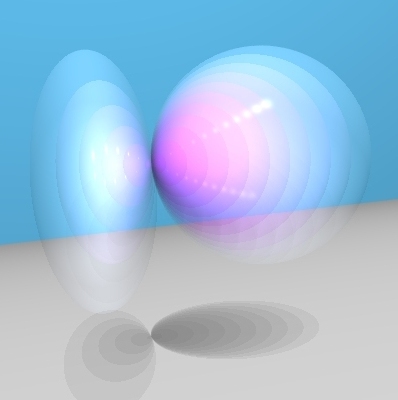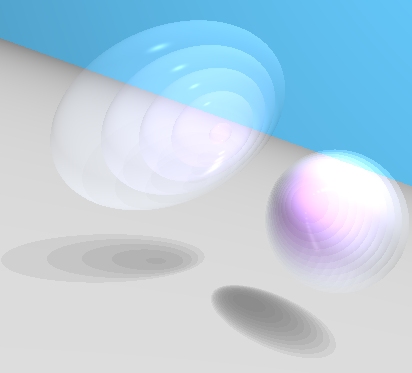

For one value of t between 0 and 1, the quadric is just one point: the equation ((1 - t) . E1 + t . E2)(x,y,z) = 0 has exactly one solution.

These empty quadrics could be called "imaginary ellipsoids," since their equations have some complex solutions. In the complex projective coordinate system, any quadric equation (with coefficients A, B, C not all zero) has infinitely many solutions, and any two quadric surfaces have a non-empty intersection.